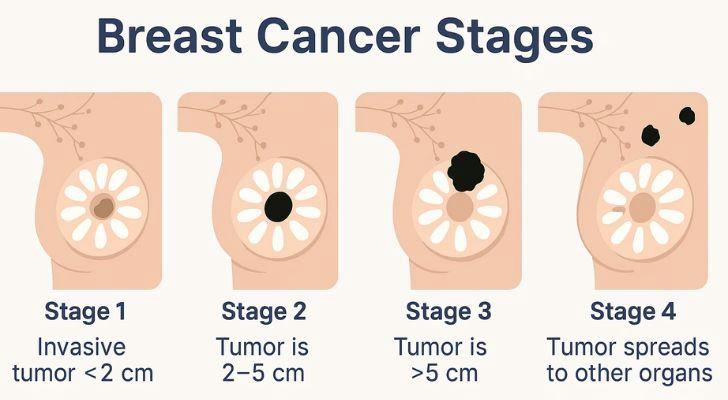Breast Cancer Life Expectancy by Stage: What You Need to Know
Breast cancer is the most commonly diagnosed cancer among women worldwide and a leading cause of cancer-related death. Understanding its symptoms, dietary influences, and age-related risk factors is vital for early detection and effective treatment.

1. Age-Related Risk Analysis and Breast Cancer Trends
- Women aged 50 and above: Highest risk group; regular mammography screening is recommended starting at age 50 by many health authorities.
- Women aged 40-49: Moderate risk with increasing incidence; some guidelines suggest individualized screening decisions based on risk factors.
- Women under 40: Lower incidence but cases do occur, often linked to genetic predisposition or family history; awareness and clinical vigilance are important.
Recent trends indicate that breast cancer rates are rising slightly in younger women, partly due to lifestyle and environmental factors.
2. Breast Cancer Staging and Expected Survival
Breast cancer is classified into stages 0 through IV based on tumor size, lymph node involvement, and distant metastasis:
- Stage 0 (Carcinoma in situ): Cancer cells confined within ducts or lobules; nearly 100% 5-year survival.
- Stage I: Small tumor ≤2 cm without lymph node involvement; 5-year survival approximately 95%-100%.
- Stage II: Larger tumor or limited lymph node involvement; 5-year survival about 85%-90%.
- Stage III: Extensive lymph node involvement or tumor invading nearby tissues; 5-year survival varies between 50%-70%.
- Stage IV: Cancer spread to distant organs (bone, liver, lung, brain); 5-year survival around 20%-30%.
Survival time depends on multiple factors including stage, tumor biology, treatment response, and patient health. Early stages often result in long-term survival, while advanced stages focus on life extension and quality of life.
3. Key Symptoms of Breast Cancer
Early breast cancer may not cause obvious symptoms, but awareness of warning signs is crucial. Seek medical evaluation if you notice one or more of the following:
- A new lump or mass in the breast or underarm
- Change in breast size or shape
- Skin changes on the breast such as dimpling, redness, or scaliness
- Nipple abnormalities, including inversion, discharge (especially bloody), or pain
- Persistent breast pain or tenderness
- Swelling or thickening of breast tissue
- Enlarged lymph nodes under the arm or around the collarbone
These symptoms do not always indicate cancer but warrant prompt clinical assessment and diagnostic imaging, such as mammography or ultrasound.
4. Dietary Habits and Breast Cancer Risk
Scientific research highlights certain dietary factors linked to breast cancer risk:
- High intake of saturated fats and red/processed meats may elevate risk
- Excessive alcohol consumption is strongly associated with increased breast cancer incidence
- Diets low in fruits, vegetables, and fiber may contribute to higher risk
- High sugar consumption may promote obesity, a known risk factor
- Protective foods include those rich in antioxidants (berries, leafy greens) and omega-3 fatty acids (fatty fish, flaxseeds)
Maintaining a balanced diet with limited processed foods, reduced alcohol, and plenty of plant-based nutrients supports breast health and overall cancer risk reduction.
5. Breast Cancer Survival Rates and Importance of Screening
According to the National Cancer Institute, five-year survival rates vary greatly by cancer stage at diagnosis:
| Stage | Five-Year Survival Rate (%) |
|---|---|
| Localized (early stage) | About 99 |
| Regional (spread to nearby lymph nodes) | About 86 |
| Distant (metastatic) | About 28 |
Early detection through regular screening (mammograms, clinical exams) substantially improves survival chances. High-risk individuals—such as those with BRCA gene mutations or strong family history—may require earlier and more frequent screening.
6. Summary
Breast cancer prevention and early detection save lives. Recognizing symptoms, adopting healthy dietary habits, following age-appropriate screening guidelines, and understanding cancer staging and prognosis are key to reducing mortality. Regular screening and prompt medical consultation upon noticing symptoms enable early diagnosis and effective treatment, improving survival outcomes.